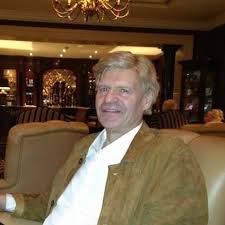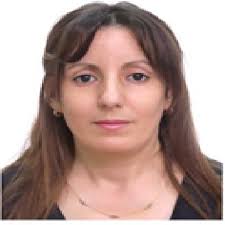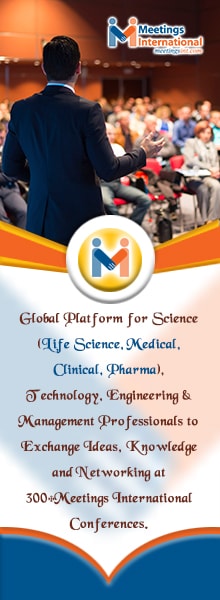Scientific Program
Keynote Session:
Title: A compact process of converting Hydrogen to K Mesons with applications in such as direct conversion to electrical power and use in Muon Catalyzed Fusion
Biography:
Abstract:
Title: Molecular science: AI in Physics
Biography:
Hakima Mokrane is a researcher in laboratory astrophysics & astrochemistry and now a researcher scientist in machine learning, she designs algorithms for solving AI problems. She graduated from Orsay University with a master (joint Honours) in Physics and Chemistry, before completing her PhD (in molecular physics & laboratory astrophysics) at Paris Observatory and Cergy University. Her interests span “all things ice and moleculesâ€, looking at how solid-state materials play a role in the processes of star and planet formation. She combines laboratory experiments with major facilities use, to understand the roll of ice in interstellar chemistry and planet forming collisions and exploit molecular dynamics simulations to understand the physical chemical properties of ice in space and now she is designing and building algorithms to solve AI problems and is interested in the problems of machine learning, deep learning and AI.
Abstract:
200 different species detected up today in the interstellar and circumstellar media have also been identified in icy environments. The fact that, for most of the species observed so far in the ISM, the most abundant isomer of a given generic chemical formula is the most stable one (MEP) suffers very few exceptions. Two couples of isomers, CH3COOH/ HCOOCH3 and CH3CH2OH/CH3OCH3 whose formation is thought to occur on the icy mantles of interstellar grains. Here, we report a coherent and concerted theoretical/experimental study of the adsorption energies of: AA/ MF and EtOH / DME on the surface of water ice at low temperature. For each pair of isomers, theory and experiments both agree that it is the most stable isomer (AA or EtOH) that interacts more efficiently with the water ice than the higher energy isomer (MF or DME). This differential adsorption shows clearly in the different desorption temperatures of the isomers. It is not related to their intrinsic stability but linked to the fact that both AA and EtOH make more and stronger hydrogen bonds with the ice surface. The formation of water molecules from the reaction between O3 and D-atoms is studied experimentally for the first time. Ozone is deposited on non-porous amorphous solid water ice, and D-atoms are then sent onto the sample held at 10 K. HDO molecules are detected during the desorption of the whole substrate where isotope mixing takes place, indicating that water synthesis has occurred. The efficiency of water formation via hydrogenation of ozone is of the same order of magnitude as that found for reactions involving O-atoms or O2 molecules and exhibits no apparent activation barrier. These experiments validate the assumption made by models using ozone as one of the precursors of water formation via solid-state chemistry on interstellar dust grains. Here we applied machine learning and AI to build and improve molecular reactions.
Oral Session 1:
- Nano Photonics and Bio Photonics | Organic Photonics
Title: Generalized Lorenz-Mie theories and mechanical effects of laser light, a celebration of Arthur Ashkin’s pioneeering work in optical levitation and manipulation.
Biography:
G. Gouesbet has completed his third cycle thesis in 1973 and his State thesis in 1977 (French system at this time).. He has been working in light scattering,, modeling of two-phase flows, non linear dynamics and chaos theory., and is the promoter of the well-known generalized Lorenz-Mie theory. He authored about 350 papers in journals and as a whole about 550 papers in journals and proceedings. His citation count in Google scholar is about 13 000 with a h-index of 58. He has been serving in numerous committees and is a honorary editor of Journal of Quantitative Spectroscopy and Radiative Transfer.
Abstract:
The Generali zed Lorenz-Mie theory (GLMT), more generally GLMTs [1], has been initially developed to address issues in optical particle characterization, more particularly in optical particle sizing, in order to simultaneously measure velocities and sizes of individual particles Embedded in flows, with applications to spray combustion or plasma spraying, among others. This line of research, however, had two opportunités to meet another line of research, namely the one of Arthur Ashkin dealing with optical levitation, trapping and manipulation of macroscopic particles. The first opportunity has been that GLMT (more generally GLMTs) is able to deal with mechanical effects of light and indeed bridged the gap between the Rayleigh and ray optics regimes to which the theoretical part of the work of Arthur Ashkin was limited. The second opportunity has been that optical levitation experiments promoted by Arthur Ashkin have been used to experimentally test the validity of the GLMT. In this talk, as a celebration of Arthur Ashkin’s pioneering work concerning the mechanical effects of laser light, I shall offer a review and overview devoted to GLMTs and mechanical effects of laser light, both in Rouen (France) where the GLMT has been built, and all over the world.
Title: Biocide films elaborated by plasma enhanced chemical vapor deposition from ZnO nanoparticles and HMDSO
Biography:
M. Kihel both working in the Universite Freres Mentouri Constantine, Algeria. He is very eminent that he published many articles.
Abstract:
For long time, organ silicon thin films have a great interest in many applications that are based on the surface modification. Recently more attention has been focused to the use of organ silicon thin films with embedded metallic Nano-sized particles as biocide films. In this study, ZnO Nanoparticles have been deposited with organic films by plasma discharge in order to elaborate biocide thin films. Tow deposited methods have been combined in order to elaborate biocide films. Dielectric barrier discharge (DBD) and plasma enhanced chemical vapor deposition (PECVD). The plasma discharge used is generated by a AC power source with frequency of about 19 kHz using HMDSO as plasma gas and ZnO powder. Bacillus bacteria in Muller Hinton environment has been used in order to exhibit the biocide properties of deposited films. It has been observed that almost all species are eliminated.
Title: On invariant speed of light
Biography:
S. Orlov is professor in Petrozavodsk State University, Russia
Abstract:
For many years, scientists - physicists have tried to measure the speed of light. Galileo - in the seventeenth century. Early experiment to measure the speed of light was held Ole Roemer, a Danish physicist, in 1676. Another, more accurate way to measure the speed of light is made in Europe Hippolyte Fizi in 1849. Francois Arago determines the speed of light in 1838 by a rotating mirror. In 1862, on the production of the speed of light worked Leon Foucault. In 1926, a result of years of efforts Albert Michelson has had some very high accuracy of the speed of light: Ñ = 299 796 000±4 000 m/s. The main and paradoxical conclusion in the study was his invariance speed of light. In other words, the speed of light is the same in all inertial frames of reference is independent of the velocity of the observer and emitter. This surprising fact for the classical physics of his time for the first time proved the Michelson experiment: the independence of the speed of light on the direction (isotropic) and the orbital motion of the Earth around the sun. In the future, this paradox was confirmed by astronomers. In particular, Willem de Sitter in monitoring the spectral binaries found that the speed of light flux from removing the stars and approaches are constant speed of light (c) and equal to each other. That is, they do not depend on the rate of the star (light sources). From the point of view of classical physics this paradox so far can’t be explained. Therefore, on the basis of the unknown properties of light in 1905, Einstein proposed the special theory of relativity (STR) in the paper “On the Electrodynamics of Moving Bodies”
Title: Realization of the relationship between quantum mechanics and relativity
Biography:
Mohamed daris is a third-year student at the Faculty of Science of Rabat he has completed the discipline in theoretical physics and physics of materials he has publications and participations in theoretical physics and systems in several journals.
Abstract:
Relativity and quantum mechanics remain two very binding things and are both separating either by method or by physical experience. In this section I will make an approach to better facilitate a connection between quantum mechanics and relativity that gives us a new vision on the fact that the two concepts can be related theoretically and experimentally to give birth to the new principles in the physical theory and to better improve theoretical and experimental research. The new conception of this principle develops scientific and technical research better. In this subject I was supposed to use more advanced methods and more develop to have a complete and satisfactory analysis of the problem for that I exploit quantum techniques peculiar to my subject which will allow me to better understand all the problems related to the quantum mechanics and relativity and try to bring them together in the same subject and in the same relationship which is the relationship that is to consider for this big problem to complicate and finally arriving at a final result.




